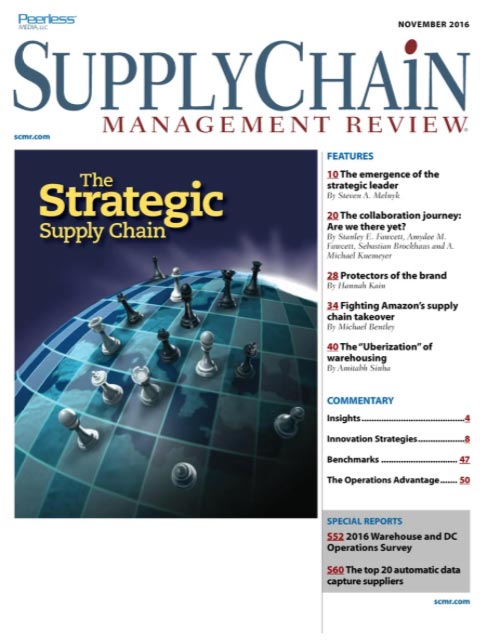Sorry, but your login has failed. Please recheck your login information and resubmit. If your subscription has expired, renew here.
November 2016
Is supply chain management strategic or tactical? Are the best supply chains collaborative? Should the goal be an integrated supply chain or an integrative supply chain? The answers are a mixed bag, according to this month’s contributors. Browse this issue archive.Need Help? Contact customer service 847-559-7581 More options
Complex supply chains have made it harder for organizations to effectively track their supply chain performance and make determinations about how best to streamline their operations. To address this problem, vendors have developed a variety of supply chain optimization tools that consider multiple factors to determine the best configurations of resources.
Two such systems, network planning and optimization tools and distribution requirements planning (DRP) software, offer the potential to increase supply chain efficiency while reducing costs. Network planning and optimization tools aid in the alignment of strategies across the supply chain—from procurement to shipping. These systems enable organizations to determine the effects of potential market changes and better implement appropriate responses to those changes. DRP software packages focus on the distribution and transportation aspect of the supply chain. They aim to help organizations determine the ideal locations and quantities of goods that will best meet demand.
According to APQC’s Open Standards Benchmarking data in logistics, each of these systems has been implemented to a modest degree among organizations. As shown in Figure 1, less than half of responding organizations have implemented network planning and optimization tools, but about a quarter of those organizations plan to implement these systems at some point in the future. Organizations responded similarly when asked whether they had adopted DRP software.
 |
This complete article is available to subscribers
only. Click on Log In Now at the top of this article for full access. Or, Start your PLUS+ subscription for instant access. |
SC
MR
Sorry, but your login has failed. Please recheck your login information and resubmit. If your subscription has expired, renew here.
November 2016
Is supply chain management strategic or tactical? Are the best supply chains collaborative? Should the goal be an integrated supply chain or an integrative supply chain? The answers are a mixed bag, according to this… Browse this issue archive. Access your online digital edition. Download a PDF file of the November 2016 issue.
 |
Download Article PDF |
Complex supply chains have made it harder for organizations to effectively track their supply chain performance and make determinations about how best to streamline their operations. To address this problem, vendors have developed a variety of supply chain optimization tools that consider multiple factors to determine the best configurations of resources.
Two such systems, network planning and optimization tools and distribution requirements planning (DRP) software, offer the potential to increase supply chain efficiency while reducing costs. Network planning and optimization tools aid in the alignment of strategies across the supply chain—from procurement to shipping. These systems enable organizations to determine the effects of potential market changes and better implement appropriate responses to those changes. DRP software packages focus on the distribution and transportation aspect of the supply chain. They aim to help organizations determine the ideal locations and quantities of goods that will best meet demand.
According to APQC's Open Standards Benchmarking data in logistics, each of these systems has been implemented to a modest degree among organizations. As shown in Figure 1, less than half of responding organizations have implemented network planning and optimization tools, but about a quarter of those organizations plan to implement these systems at some point in the future. Organizations responded similarly when asked whether they had adopted DRP software.
 |
SUBSCRIBERS: Click here to download PDF of the full article. |
SC
MR


Latest Supply Chain News
- Tech investments bring revenue increases, survey finds
- Survey reveals strategies for addressing supply chain, logistics labor shortages
- Israel, Ukraine aid package to increase pressure on aerospace and defense supply chains
- How CPG brands can deliver on supplier diversity promises
- How S&OP provides the answer to in-demand products
- More News
Latest Resources

 Explore
Explore
Topics
Latest Supply Chain News
- Tech investments bring revenue increases, survey finds
- Survey reveals strategies for addressing supply chain, logistics labor shortages
- Israel, Ukraine aid package to increase pressure on aerospace and defense supply chains
- How CPG brands can deliver on supplier diversity promises
- How S&OP provides the answer to in-demand products
- AI, virtual reality is bringing experiential learning into the modern age
- More latest news
Latest Resources

Subscribe

Supply Chain Management Review delivers the best industry content.

Editors’ Picks





